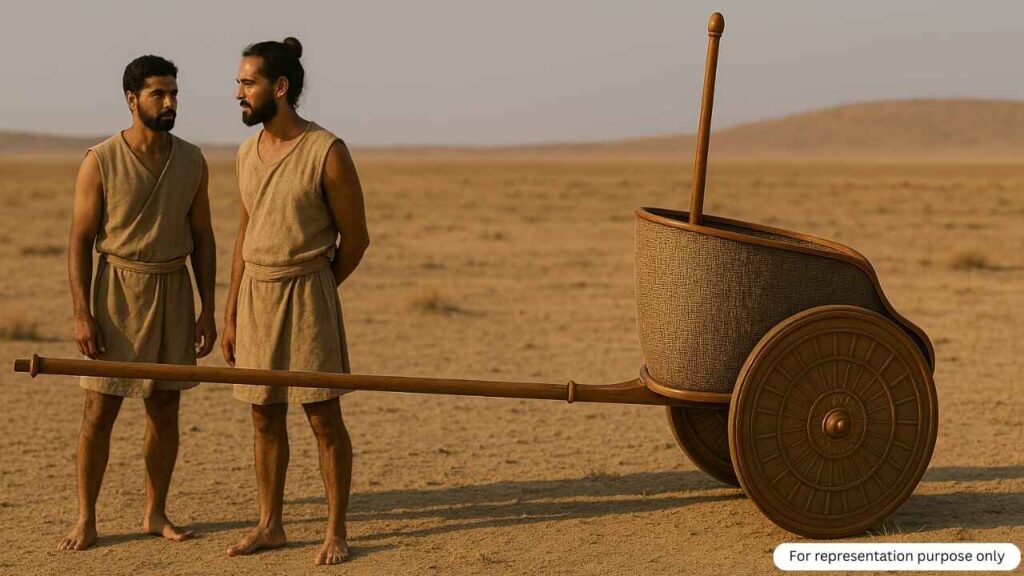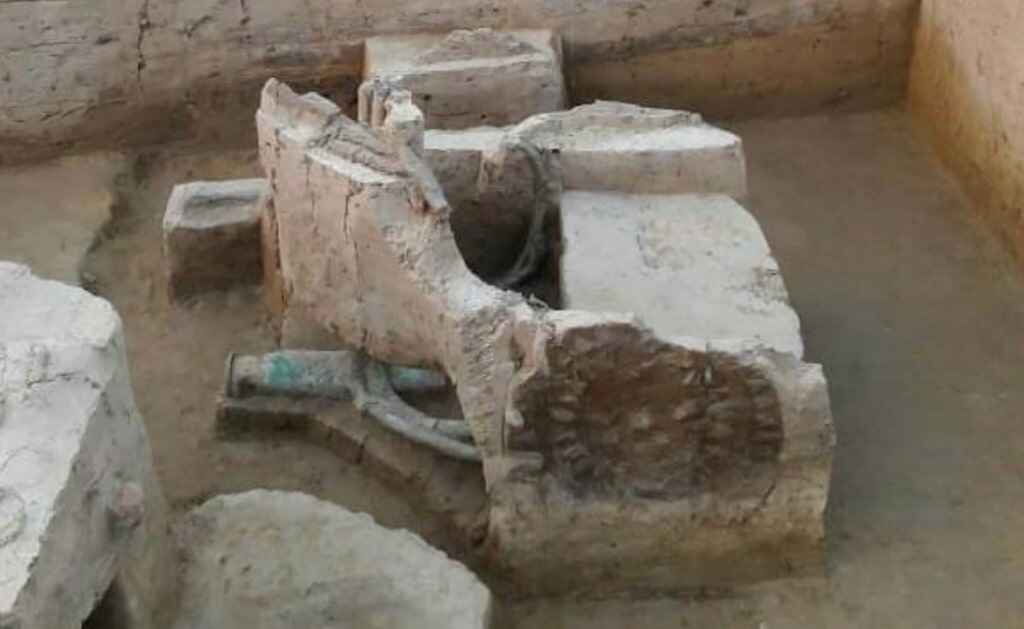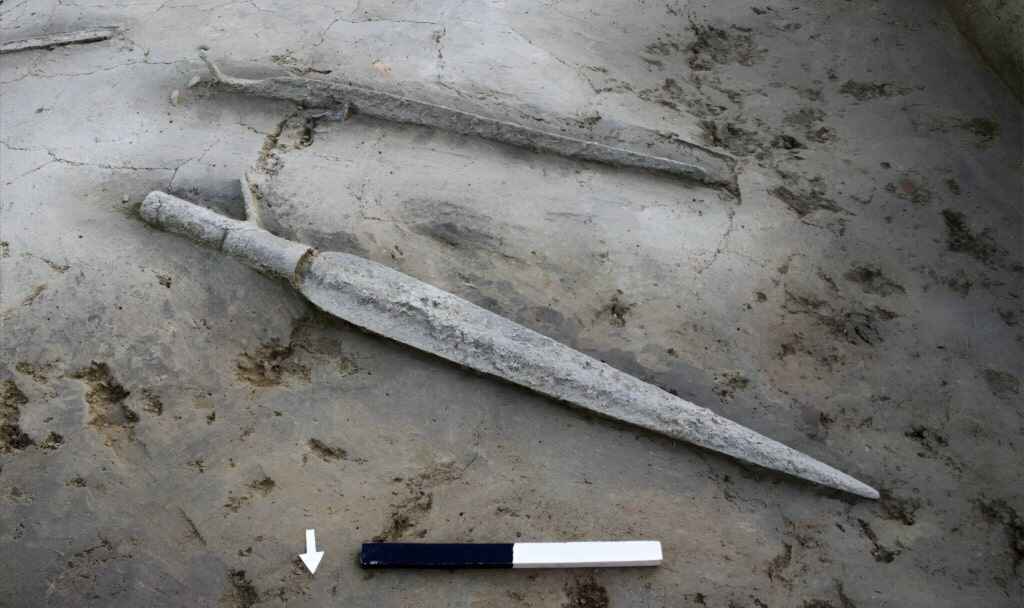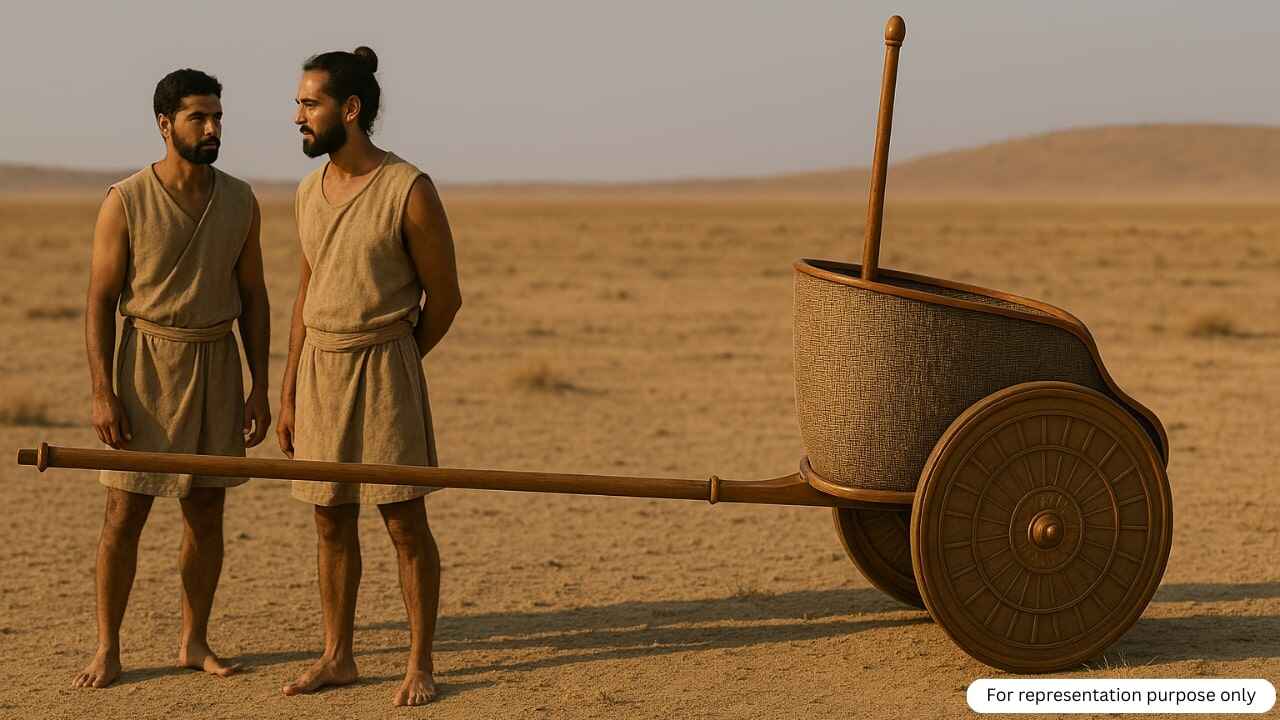
In a remarkable archaeological breakthrough that has rewritten the history of ancient Indian civilization, the discovery of royal burials and war chariots at Sinauli in Uttar Pradesh stands as one of the 21st century’s most significant archaeological finds. Carbon dating has confirmed these artifacts to be approximately 4,000 years old, positioning ancient India alongside contemporary Mesopotamian and Greek civilizations in terms of warfare technology and craftsmanship. This discovery not only challenges previously held notions about the technological capabilities of ancient Indians but also provides unprecedented insights into their burial practices, social hierarchy, and warfare strategies.

The story of Sinauli’s archaeological significance began in 2005 when a local farmer accidentally stumbled upon ancient pottery and skeletal remains while tilling his field. This chance encounter prompted the Archaeological Survey of India (ASI) to commence excavations, which continued for 13 months and revealed an astonishing array of artifacts, including coffins, chariots, pottery, and skeletal remains. What makes this discovery particularly remarkable is that the wooden artifacts had been preserved for nearly four millennia, thanks to their copper sheaths, wires, and inlays.
The initial excavations between 2005 and 2006 uncovered 116 burials, with 10 more discovered in subsequent years, making Sinauli India’s largest known necropolis. However, it was the 2018 excavation led by Dr. S.K. Manjul of the Archaeological Survey of India that truly revolutionized our understanding of ancient Indian warfare capabilities with the discovery of royal burials containing chariots and sophisticated weapons.
The Extraordinary Chariots: A Technological Marvel
The most extraordinary discovery at Sinauli is undoubtedly the three full-sized war chariots, representing the first evidence of such vehicles in the Indian subcontinent. These chariots featured solid-disk wheels and were initially interpreted as horse-pulled vehicles. What makes these chariots particularly remarkable is their sophisticated design and craftsmanship.

The wheels of these chariots were decorated with three rows of copper triangles radiating from the center, creating a composition resembling the sun’s emanating rays. This decorative pattern suggests these vehicles weren’t merely functional but also served as symbols of power and status. The size and shape of the chariots indicate they were designed to be pulled by two horses, featuring a long pole with a thin circumference attached to a shorter yoke.
Archaeological evidence shows that these chariots were buried alongside their owners in elaborate funeral ceremonies, suggesting they held immense cultural and possibly religious significance. The discovery of these chariots places India at par with ancient civilizations in Mesopotamia and Greece, where chariots were extensively used in warfare around 4,000 years ago.
Royal Burials and Elaborate Coffins
The Sinauli excavations revealed different types of burials: primary, secondary, and symbolic. In primary burials, the full body was interred; secondary burials contained bones that remained after the body had been exposed to the elements; and symbolic burials were created when a body wasn’t available for cremation. Among the eight burials unearthed during the 2018 excavation, three were coffin burials, three were secondary burials, and two were symbolic burials containing animal remains rather than human skeletal remains.
Perhaps the most fascinating aspect of these burials is the wooden coffins with intricate copper decorations. One unique royal burial contained a copper-decorated legged coffin with a lid featuring high-relief carvings of a series of anthropomorphic figures. These figures wore headgear with two horns and a peepal leaf (Ficus religiosa) in the center, suggesting possible religious or cultural symbolism.
The craftsmanship of these coffins reveals the sophisticated woodworking and metalworking skills of the Sinauli inhabitants. The coffins were mounted on legs, measuring between 44-50 cm long, with the coffins themselves reaching impressive dimensions – one measured 259 x 72 x 95 cm. Both the inside and outside of the coffins were sheathed in copper, with decorative elements consisting of copper strips and triangles.
Warfare Artifacts: Evidence of a Warrior Culture

Alongside the chariots and coffins, the excavations yielded an impressive array of warfare artifacts that paint a picture of a sophisticated warrior society. These include:
- Antenna swords with wooden hilts and copper spiral wiring
- Copper shields decorated with geometric patterns
- Bowl-shaped copper helmets
- Copper daggers with wooden handles fixed with copper nails
- Torches (mashaal) with copper pans and wooden handles covered with copper sheaths
- Bows with bone arrowheads
These discoveries are particularly significant because they provide evidence of advanced warfare technology in ancient India. While no weapons were discovered in earlier Indus Civilization sites, Sinauli demonstrates that ancient Indians possessed sophisticated weaponry and likely engaged in organized warfare.
Scientific Dating and Analysis: Establishing the Timeline
Radiocarbon dating has confirmed that the Sinauli site dates back approximately 4,000 years to around 2000 BCE. More specifically, scientific analysis conducted by experts indicates that the site’s time span ranges between ~5000-3500 years BP (3077-1466 BC), with precise dating placing it around 4000 years BP (2000 BCE).
This dating places Sinauli culture in the Chalcolithic period (Copper Age), contemporary with the late mature phase of Harappan civilization.
Cultural Context: Ochre-Colored Pottery Culture
The Sinauli findings are associated with the Ochre-Colored Pottery (OCP)/Copper Hoard culture that flourished in northern India between 2000-1500 BCE. Known for its distinctive pottery and advanced metal implements, this culture reflects high technological sophistication.
Speculation: Bridging Archaeology With Ancient Texts
Some researchers have speculated connections between Sinauli findings and ancient Indian texts such as Vedic literature or epics like Mahabharata. For instance:
- The cultural material found at Sinauli has been related to Vedic traditions.
- Some scholars suggest parallels between burial practices described in ancient texts.
- Hypotheses propose links between Sinauli’s warrior society and descriptions from epics like Mahabharata.
While intriguing, these connections remain speculative without direct evidence linking archaeological findings to literary traditions.

